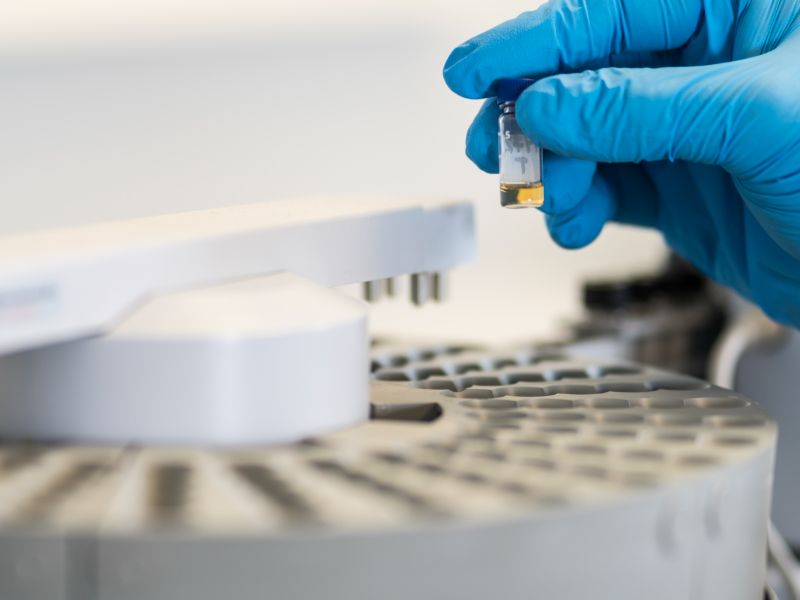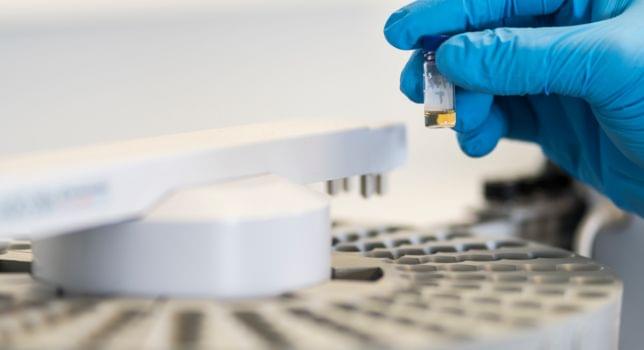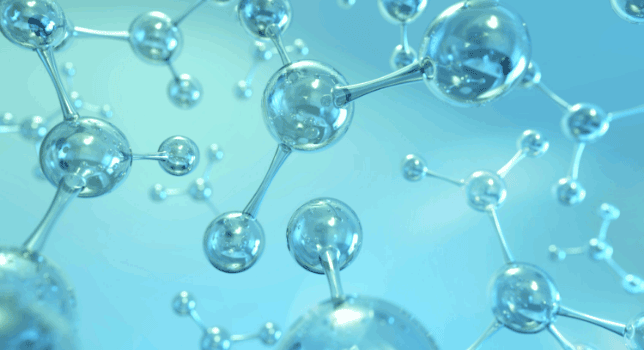Ever wonder how labs identify the hidden components in materials? Two powerful techniques, Gas Chromatography-Mass Spectrometry (GC-MS) and High-Performance Liquid Chromatography (HPLC), are at the forefront of this investigative work. Let's break down how they work in a short conversation with Amanda Cool, supervisor of our Akron chemistry lab here at Smithers.
What is the main purpose of material analysis techniques like GC-MS and HPLC?
Both GC-MS and HPLC are "separation methods." In the real world, substances are rarely pure. These techniques physically separate compounds within a mixture, allowing for their individual identification and precise measurement (quantification).
What is Gas Chromatography-Mass Spectrometry (GC-MS)?
GC-MS is a technique primarily used for analyzing volatile compounds (substances that easily turn into a gas). It uses a gas, typically helium, as a carrier to move the sample through a special column that separates compounds based on their volatility and interactions with the column's material. After separation, a mass spectrometer identifies each compound by its unique "mass spectrum," much like identifying a person by their DNA – it's extremely precise.
What kind of things can GC-MS analyze?
It's excellent for identifying and quantifying volatile substances such as plasticizers, low-boiling antioxidants, and other small, easily vaporized molecules. It's also particularly powerful for Volatile Organic Content (VOC) analysis.
What is High-Performance Liquid Chromatography (HPLC)?
HPLC is useful for less volatile compounds – those with higher boiling points that can't be easily vaporized for GC-MS. In HPLC, solvents carry the sample through a column, separating components based on their different interactions with the column's material. As components exit the column, detectors like a Photodiode Array (PDA) or Refractive Index (RID) record their presence. This is likened to identifying someone by a mug shot – it can narrow down possibilities, but might be less precise than a "DNA" (mass spectrum) for very similar molecules.
What are the common applications for HPLC?
HPLC is primarily used for identifying and quantifying non-volatile compounds, especially in materials like rubber extracts.
How do these testing techniques benefit clients?
By using GC-MS and HPLC, laboratories can provide clients with crucial data for:
- Reconstructing product formulas.
- Analyzing volatile organic content (VOCs).
- Identifying and quantifying small molecules within samples.
- Detecting unwanted or unexpected compounds.
- Ensuring accurate raw material analysis.
- Performing failure analysis to understand why a material might have chemically or physically failed.
To get a better understanding of your rubber compound formulations, contact us to get started.






